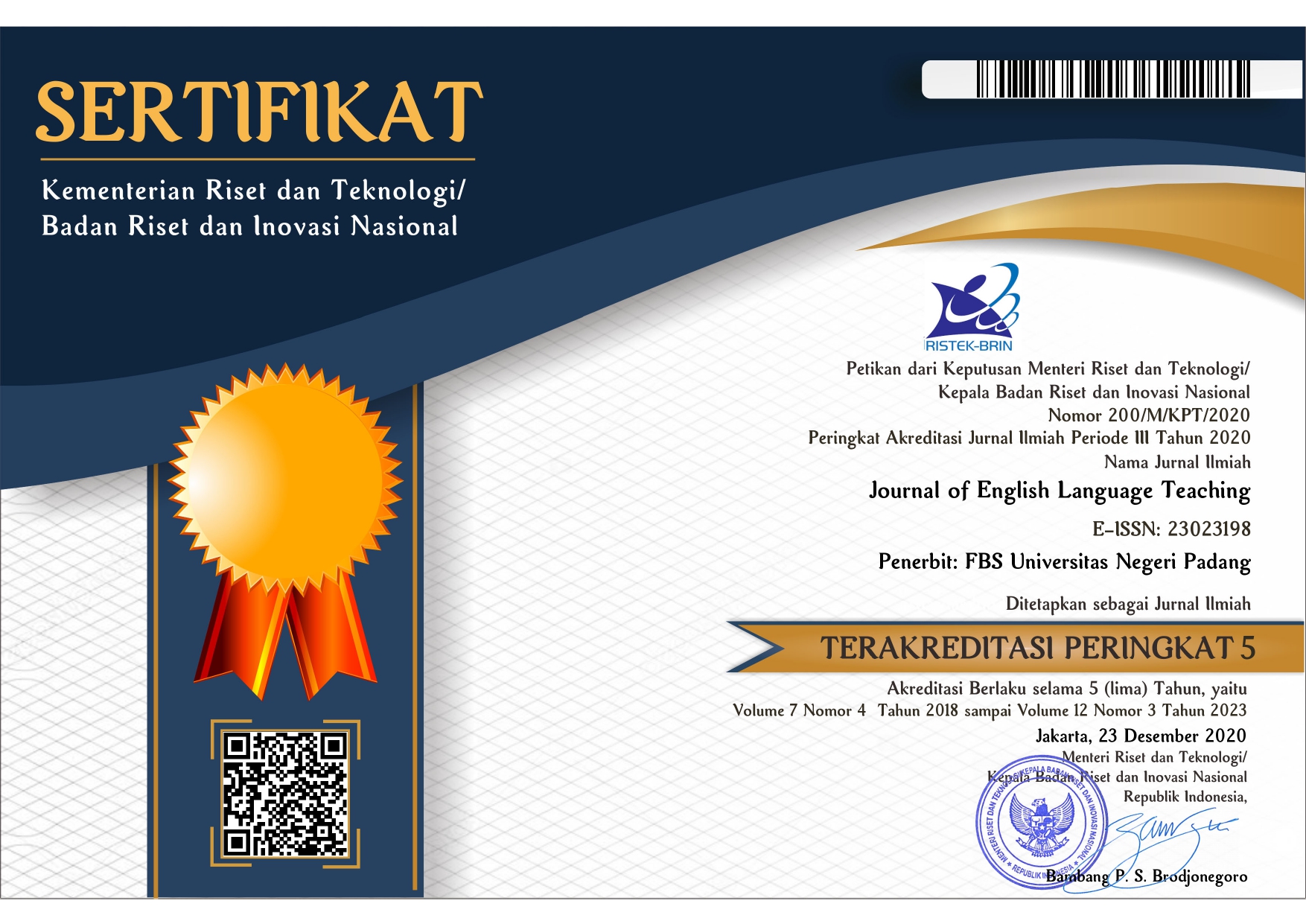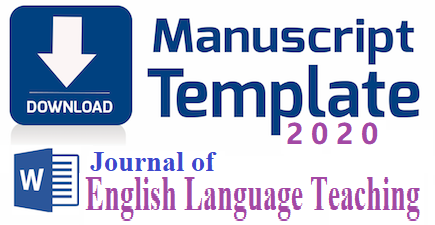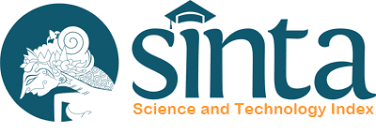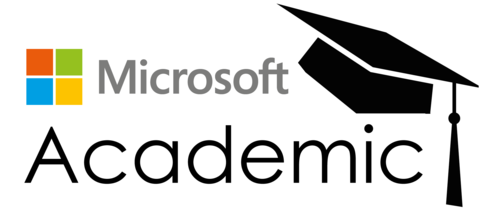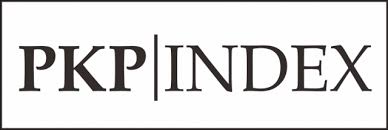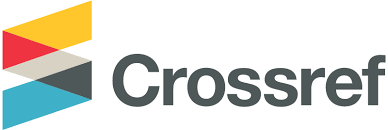The Correlation Between Students Ability in Summarizing and Their Reading Comprehension at Universitas Negeri Padang
 ), Ainul Addinna(2),
), Ainul Addinna(2), (1) Universitas Negeri Padang
(2) Universitas Negeri Padang
 Corresponding Author
Corresponding Author
Copyright (c) 2024 Saskia Maharani Putri
DOI : https://doi.org/10.24036/jelt.v13i3.130314
Full Text:
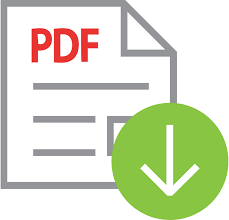 Language : en
Language : en
Abstract
Keywords
References
Aghazadeh, Z., Mohammadi, M., & Sarkhosh, M. (2022). Oral and Written Summarizing Strategy Training and Reading Comprehension: Peer-Mediated vs. Individualistic Task Performance. Journal of Language and Education, 8(1), 11-22. https://doi.org/10.17323/jle.2022.11157
Brown, H. D., & Abeywickrama, P. (2019). Language Assessment: Principle and Classroom Practices 3rd Edition. New York, NY: Pearson Education
Chayani, D., & Fitrawati. (2020). An Analysis of Students’ Ability in Summarizing Reading Passage in Critical Reading Class. Journal of English Language Teaching, 9(2), 288-297.
Cho, Y. (2012). Teaching Summary Writing through Direct Instruction to Improve Text Comprehension for Students in ESL/EFL Classroom. Master’s Paper. University of Wisconsin-River Falls.
Fadhilah, N. (2018). The Correlation Between Students’ Summary Writing Ability and Their Reading Comprehension at The Eleven Grade of Islamic Senior High School. Thesis. Riau: Universitas Islam Negeri Sultan Syarif Kasim Riau. Retrieved from: http://repository.uin-suska.ac.id/12232/
Frey, N., Fisher, D., & Hernandez, T. (2003). What’s the gist? Summary writing for struggling adolescent writers. Voices from the Middle, 11(2), 43–49.
Hijazi, D. (2018). The Relationship Between Students’ Reading Comprehension and Their Achievement in English. Retrieved from: http://dx.doi.org/10.17265/1539-8080/2018.03.002
Klingner, J. K., Vaughn, S., & Boardman, A. (2007). Teaching Reading Comprehension to Students with Learning Difficulties. New York, NY: The Guilford Press.
Mokeddem, S., Houcine, S. (2016). Exploring The Relationship Between Summary Writing Ability and Reading Comprehension: Toward an EFL Writing-to-Read Instruction. Mediterranean Journal of Social Sciences, 7(2), 197-205.
Ovilia, R., Addinna, A., & Oktoviandry, R. (2022). Students’ Paraphrasing Ability In Academic Writing: Techniques and Challenges. Komposisi: Jurnal Pendidikan Bahasa, Sastra, dan Seni, 23(2), 141-151.
Pahmi & Satriandri, Y. (2016). Using Concept Circles Strategy on Students’ Writing Ability in Descriptive Text. Indonesian Journal of Integrated English Language teaching (IJIELT), 2(1). 105-114.
Pourkalhor, O., & Kohan, N. (2013). Teaching Reading Comprehension Through Short Stories in Advance Classes. Asian Journal of Social Sciences & Humanities, 2(2), 52-60.
Ramadhianti, A. & Somba, S. (2023). Reading Compehension Difficulties in Indonesian EFL Students. Journal of English Language Teaching and Literature (JELTL), 6(1), 1-11.
Regala-Flores, E., & Lopez, M. (2019). Self-reported summarizing and paraphrasing difficulties in L2 writing contexts: Some pedagogical interventions. Indonesian Journal of Applied Linguistics, 9(2), 286–296. https://doi.org/10.17509/ijal.v9i2.20219
Sari, A. P., Yunita, W., Harahap, A. (2020). A Comparative Study Between The Effect of Summarizing and DRTA Strategies om Students’ Reading Comprehension. Jurnal Al-Lughah, 9(2), 1-12.
Shanahan, T., Fisher, D., & Frey, N. (2018). The Seven Strategies of Highly Effective Readers: Building a lifetime love of reading. Jossey-Bass.
 Article Metrics
Article Metrics
 Abstract Views : 197 times
Abstract Views : 197 times
 PDF Downloaded : 31 times
PDF Downloaded : 31 times
Refbacks
- There are currently no refbacks.
Copyright (c) 2024 Saskia Maharani Putri

This work is licensed under a Creative Commons Attribution-NonCommercial 4.0 International License.

